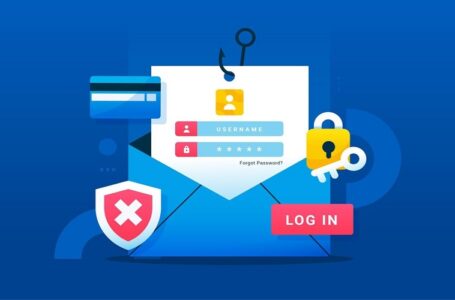Bitdefender Launches New Email Protection Capabilities for Consumers
B2B marketing strategies: Everything you need to know about building an original podcast series

Podcasts are more popular than ever. More businesses are turning to the media as the number of listeners rises. The goal of B2B marketing teams is to increase targeted brand awareness while interacting with clients and prospects. More than 40% of the Cloud 100 businesses had their own branded podcasts in 2021. A corporate podcast may find it difficult to stand out, though, given the stiff competition already there. For a podcast to win and retain listeners, it needs compelling stories, credible information, A-list guests, and great production values.
How do people listen? Engagement happens mostly on apps and the go
Between 50% and 65% of all podcast, listening is done on Apple Podcasts and Spotify combined (reports vary on these numbers). The rest of the listeners get the podcasts using a variety of mobile podcast apps, online players, desktop browsers, or YouTube. Because most people listen to podcasts during downtime, during commutes, at the gym, or while doing chores, podcasts are a great method to connect with consumers and potential customers. Podcasts complement current marketing strategies well because they frequently reach prospects while they are at work (cold email, paid search, LinkedIn advertising, or webinars).
What is a B2B podcast?
A B2B podcast (or branded podcast) is an original audio series created by a company as part of its content marketing initiative. It is usually published as weekly episodes or seasons. It is designed specifically for a business persona at a B2B company, which means the podcast is much more targeted. In a B2B podcast, you are seeking to provide specific information to a niche audience, and your goal is to educate, inspire, and entertain your listeners. A B2B podcast series is often more than just audio. You can record both audio and video, turning each episode into multiple pieces of content for your website and social media channels. Think of your company’s content marketing as a portfolio — you want to have various types of written, audio, and video content so that your audience can opt-in to the type of content they prefer (long form, short form, guides, how-to’s, practitioner-led or deep dives). The key here is creating high-quality options that are consumable in the way we consume media in 2022 (mobile first).
Do B2B podcasts work?
According to a study conducted by the BBC, organizations with branded podcasts see:
- 89% higher awareness
- 57% higher branded consideration
- 24% higher brand favorability
- 14% higher purchase intent
- 16% higher engagement
- 12% higher memory encoding
Original podcasts are rapidly expanding to be part of the B2B marketer’s tool kit. Many enterprise companies create multiple podcast series that target different personas or industries. For example, large B2B companies like VMware and Dell have a variety of different shows. High-growth startups are also heavily investing in the trend. For example, Qualified (which recently raised $95 million) has three original podcasts and video series, and creates Qualified+ to house original content.
What are the types of B2B podcasts?
- Interview style – Interview-style podcasts are usually a free-flowing conversation between host (s) and guest(s). They have segments or audio cues that keep the listener interested. The content is usually for a target persona, topic, industry, or vertical (that is, for example, CMOS, retail, cyber security, data) and they can be between 20 and 60 minutes long. Examples: Demand Gen Visionaries, The Data Cloud Podcast, We’re in! and CIO Classified.
- Blended narrative – Blends guest interviews and scripted narration. The story is usually 50% scripted and is either driven by personal stories or the news. The narrative is pre-scripted by a writer, executed by a producer and editor, and the sound design is created by an audio engineer. Examples: Often Imitated, Data Radicals or Masters of Scale
- Scripted Narrative (non-fiction or fiction) – Complex story that is 100% scripted, without using published interviews. These can be episodic (standalone episodes) or serialized (connected like a Netflix Series). The story is written by a writing team and the components are put together by a producer and editor. Sound design is created by an audio engineer. Examples: The Hacker Chronicles, The Message, or Hypnopolis.
- Host-only – Host-only podcasts feature a conversation between two (or more) hosts discussing specific topics, diving into research or studies, or sharing thoughts on the latest news. These often have recurring segments or audio cues to keep the listener interested. Example: The Advanced Selling Podcast.
What is the goal for a B2B podcast?
Every company has different goals for their podcast, but it’s usually a combination of the following ten. The beauty of creating a podcast is that you can leverage it to drive impact in multiple areas of the business.
- Brand: Drive brand awareness to your target market.
- Engage target accounts (ABM): Help your sales team, who is hyper-focused on key accounts. This is the perfect way to make sure that you can co-create content with targeted accounts.
- Content machine: Create a high-quality content machine. The content of a specific episode can later be repurposed into shorter audio or video clips, which will in turn generate more revenue.
- Pipeline: Target key prospects and accelerate pipeline.
- Community: Build and own a community.
- Category: Define a category and assert market leadership.
- Relationships: Connect to key customers, prospects, and influencers.
- Customer Stories: Tell more customer stories in high-quality audio/video.
- Thought Leadership: Make your CEO/CXO a thought leader.
- Social: Create a video-first approach for engaging social content
Podcasts are longer-form content where the speakers can discuss complex topics in depth. If you sell an enterprise product with a large buying committee, podcasts are a great tool to engage the group.
Focus on the audience
A successful podcast can be a highly effective tool for fueling your company’s growth, but it’s not easy to create a show that isn’t just about you. The first step in creating a successful podcast is to determine your overall business objective. Choose from one (or many) of the examples above. But after that? Focus on the audience. Determine your audience’s objective. What do they want to know? How can you deliver it? Do you want something very niche for a specific demographic or something a little broader? In creating your content, the most important consideration should be the needs of the audience. While you want to align your content with your brand goals, finding out what your customers need to know and placing these concerns first is ultimately the key to producing a successful podcast.
Focus on the guest experience
As they say, customer experience is the new brand. The way that you treat your podcast guests is a very close representation of your brand. Are you setting up prep calls? Sending over questions ahead of time? Do you share an episode draft with their PR team before the episode goes live? Are the guest’s name, title, and company spelled right? These are just some of the many things to consider when inviting a guest to your podcast. You want your podcast guests to feel comfortable throughout the interview process. They should be excited to share the episode with their team members and on their social media channels. Guests who have a positive experience on your show can be great advocates for your podcast and overall brand. Sourcing guests and building a consistent pipeline are two major challenges for many companies who are just starting to build out their podcast series. Ensuring that you have a pipeline of quality guests can make the process a little easier.
Have a clear format and be consistent
Next, you’ll decide on the specific format and content of your podcast. In a crowded podcast market, you’ll need every advantage you can get to make your episodes stand out. After all, marketing should be remarkable. The most important way to help your podcast get attention is to establish a unique, authoritative voice and a compelling format. You want people to tune in to your podcast because it offers them something they can’t get from other podcasts. This “emotional personality” is the combination of the authority of your host, guests, sound design, the quality of the recording, and how the stories are told. Striking a balance between informative and entertaining content is tricky – don’t be boring! Consistency is key. You should have a similar format for the majority of your episodes and publish episodes on a consistent cadence. Your format, quality, and content create a “promise” that you need to deliver on in every episode. Weekly podcasts generally outperform shows that publish on a random, inconsistent schedule. Crafting a compelling narrative is hard work, so you want to give yourself the best shot.
Distribution is vital
Just because you built the podcast does not mean the audience will come. You must have a strong distribution and marketing strategy in place. In addition to getting your podcast on the right platforms, effective strategies to increase awareness of your podcast could include targeted distribution, cross-promotions, and smartly-placed advertising. I could write another 1,000 words on this, but you must market your content – in my opinion, it’s non-negotiable.
A winning strategy
Regardless of the style or strategy used, podcasts have emerged as a crucial tool for B2B businesses to communicate their messaging, build brand recognition, influence the sales pipeline, engage new clients, and share customer success stories. The moment is now since the format is proving to be more popular than ever.




